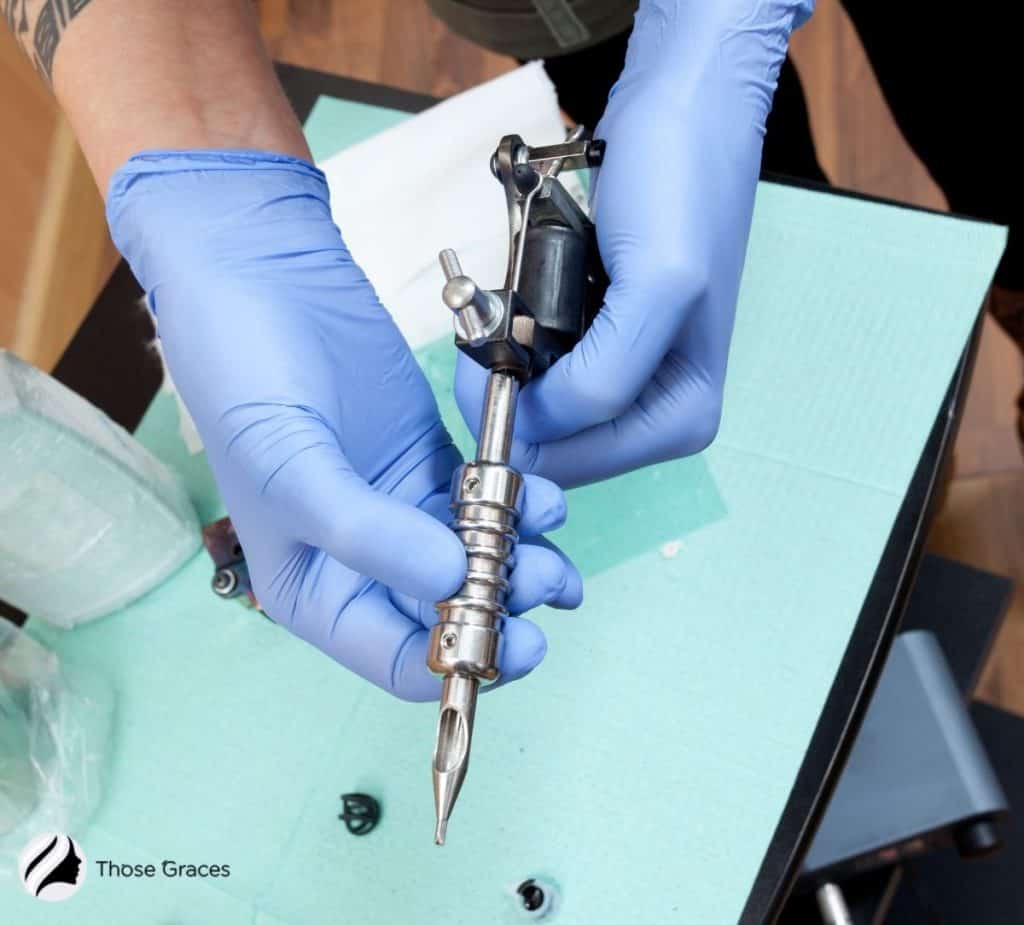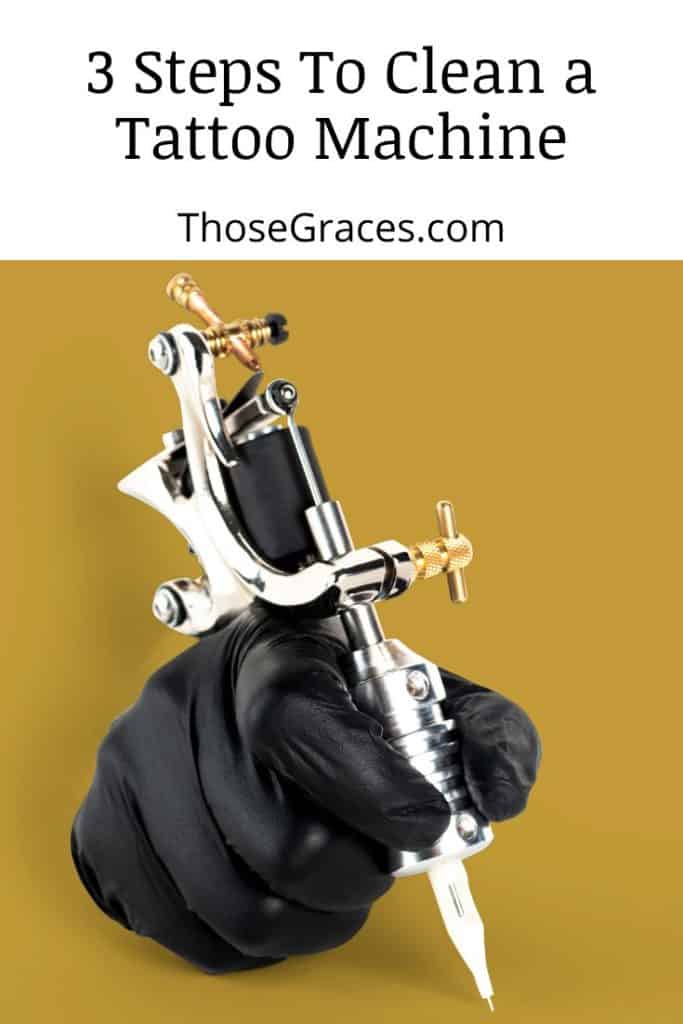With the amount of money Americans spend yearly on tattoos ($1.65 billion), the tattoo industry has many things to take into consideration. (1)
One major consideration is sanitization. It would be a health crisis if tattoo artists and shops didn’t know how to properly clean tattoo machines.
If you’re curious about the process, here’s how it’s done:
- Clean your machine.
- Disinfect and sterilize your machine.
- Use autoclave.
- Use cold sterilization.
Table of Contents
What Do I Need to Clean Tattoo Machine?
Here’s a tattoo equipment checklist for you to keep in mind when thinking of cleaning. You need to examine all of the equipment from this list for sterilization.

Using disposable products is another component of having a sanitary tattoo shop.
Remember to carry out the sterilization process for any surface that might come into contact with germs.
This includes metal surfaces, the tattoo chair, the armrest, and the entire tattoo station.
If you want to know more about how to set up your tattoo station, watch this video from someone who does it himself:
More than just the tattoo machine, every space in a tattoo shop contributes to a clean environment that keeps customers returning for tattoo sessions!
Because your machine is reusable and your goal is to prevent cross-contamination, you must regularly and thoroughly clean it.
Here’s what you need to clean a tattoo machine:
Disinfectant
I recommend you use enzymatic cleaning solutions, detergent solutions, or chemical disinfectants along with alcohol wipes to break down complex contaminants.
You can use the same type of cleaning products to clean the grips. Whatever brand of spray or antibacterial wipes you prefer will work.
Autoclave
An autoclave is a foolproof method of ensuring you reach every bit of bacteria and germs.
Autoclaves are primarily used for sterilization processes. These machines are meant to sanitize your machine using high-pressure, warm water, and vapor.
The autoclave process will also take care of grips unless you use disposable grips.
An important thing to remember is to avoid bleach because it will damage the metal of your machine and speed up the rusting process.
Ultrasonic Cleaner
An ultrasonic cleaner can be used as an alternative or as a step in addition to using an autoclave.
The ultrasonic method relies on high frequencies and chemical cleaning solutions to combat contamination.
You can also use chemical baths to soak your equipment overnight.
ALSO CHECK: Best Tattoo Pens for Beginners
3 Steps To Clean a Tattoo Machine
There are many ways to clean the machine. Put on your medical gloves, and let’s begin.
Step 1: Use Disinfectant For Sterilization
Spray and wipe your machine as thoroughly as possible with the disinfectant of your choice or the ones I’ve listed below.
I know very well that disinfectants can never finish the whole job, but that is no reason to skip this step.
Aim to get off every visible bit of muck as possible in this step.
Most disinfectants will leave residuals, so alcohol wipes come in handy when you remove them.
Here’s a helpful video about disinfecting your equipment to watch as you read through the rest:
Step 2: Autoclave Your Machine
This is a step you cannot skip without compromising the health and safety of your clients and breaking regulations.
Although it will not remove all microorganisms, it is one of the safest and most accessible methods and reduces the chance of infection to an almost negligible degree.
Make sure to autoclave all your tattoo equipment in addition to the machine itself. This includes all the grips.
It uses heat and steam at high pressure to clean your machine. However, there’s an exception.
An autoclave cannot be used for the motor of your tattoo machine. So, unless you can remove the motor, you should move on to the next step.
Step 3: Use Cold Sterilization
Cold sterilization can be done using an ultrasonic cleaner. This is perfectly safe for the motor of your tattoo machine.
However, this is a method to clean your machine, not make it sterile. You will have to use disinfectants, alcoholic wipes, and an autoclave.
As mentioned above, you can even use it for an overnight cleansing process.
If you’ve chosen to use this method, make sure you use a plastic bag to protect your tattoo machine.
I would advise using this in combination with an autoclave rather than as an alternative because autoclave is the safest procedure on this entire list.
Frequently Asked Questions
1. Can I clean my tattoo machine with alcohol?
2. Does boiling tattoo needles sterilize them?
3. Do you have to bag your tattoo machine?
Conclusion
I know the information I have shared will help you maintain a sanitary tattoo station and shop with clean tattoo equipment.
Tattoos are stunning! Personal art should never cause harm to a client or artist, which is why you must use the best methods possible.

If you have any more helpful tips, please let me know in the comments below.
Until then, stay safe, and stay creative!
References:
1. Zuckerman A. 38 Tattoo Statistics: 2020/2021 Industry, Trends & Demographics [Internet]. CompareCamp.com. 2020 [cited 2022 Nov 17]. Available from: https://comparecamp.com/tattoo-statistics/#:~:text=Americans%20spend%20%241.65%20billion%20yearly%20on%20tattoos



